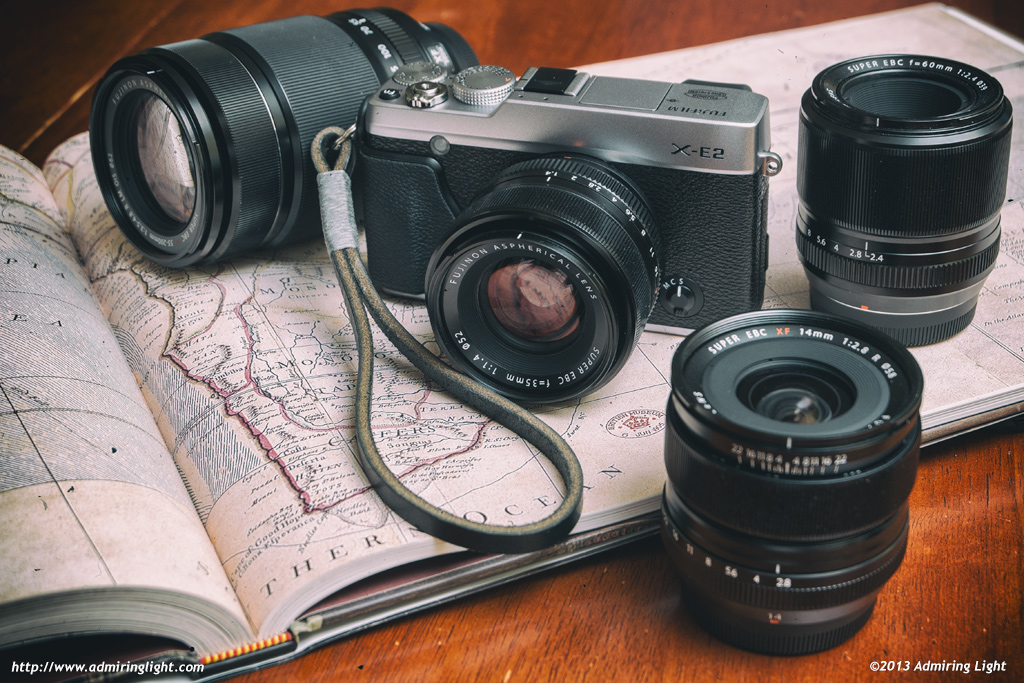Fuji has released a rather large number of bodies in 2013, and they conclude the year by issuing their first X-Series upgraded camera, the X-E2. When the X-E1 (reviewed here) was released only a little more than a year ago, it was the second entry in the X-System. A scaled down X-Pro 1 without the optical viewfinder. Even though the X-Pro 1 has yet to see a successor, Fuji announced the X-E2 last month to succeed the year old X-E1.
The X-E2 looks almost identical to its predecessor, but it carries with it a lot of changes on the inside, including EVF improvements, faster autofocus, a new processor and more. Let’s dive in!
If you’re not familiar with my reviews, I review from a real world shooting perspective. You won’t find lens charts or resolution numbers here. There are plenty of other sites that cover those. I review products on how they act for me as a photographic tool. I am not a videographer, so my reviews concentrate on the still imaging capabilities of a camera.
Body and Ergonomics

When you first look at the X-E2, it’s hard to recognize it as a new camera. In fact, the exterior design is nearly identical to the X-E1. Indeed, from the front, the only visible difference between the two cameras is the presence of the number 2 on the engraved top plate. The X-E2 is exactly the same size, has the same grip, the same EVF placement and mostly the same button arrangements, with a few modifications. As such, it feels exactly the same in the hand as the X-E1.
The X-E2 has the same retro styling as the X-E1 before it, and the look still holds up. The X-E2 is available in silver and black, and both look quite handsome. The top plate and front are made of magnesium alloy and the rear of the camera is plastic. The result is a relatively solidly built, but very lightweight camera. When I reviewed the X-E1, I noted that my copy had some misaligned seams and some other small niggles. These are not present on the reviewed X-E2, which is quite precisely built.
The camera is comfortable to hold with most of the prime lenses, though the grip is rather small when using a larger lens like the Fuji 55-200mm. I’d recommend picking up an accessory grip to aid in handling with heavier lenses.
The control layout is largely unchanged from the X-E1, though some of the buttons, such as the AF button and Q button have been moved from their original locations on the X-E1. Fuji added the ability to make the down arrow on the four-way controller on the X-E1 operate the AF point selection in a firmware update this past summer. With the X-E2, that position has become the official AF button. This makes a lot more sense ergonomically, and now all major camera controls that are likely to be changed during shooting can easily be reached with the camera to your eye.
Viewfinder and Screen

On paper, the electronic viewfinder (EVF) is the same one in the X-E1. It’s a 2.4 million dot EVF that is clear and detailed and decently large. In practice, the EVF is massively upgraded. The big difference is the minimum refresh rate, which has increased from 20 fps to 50 fps. That may not sound like a big deal, but when light levels drop, the X-E2’s EVF is smooth and remains clear in any light. In the darkest of light, a little noise can creep in, especially when you magnify the view, but it’s still not bad. It makes the X-E2 a joy to use in any light, where the X-E1 could sometimes bog down and become practically unusable, especially when manually focusing in low light. The X-E2 has no such problems, and using manual focus lenses with this EVF is excellent, especially with the focus aids that I’ll discuss more in detail on page 3.
The rear screen has also gotten an upgrade, though this one is immediately visible. The new rear screen on the X-E2 has over double the resolution as the somewhat dated one on the X-E1. The X-E2’s rear screen is a 3.0″ 1 million dot display that is gorgeous. The view is clear, detailed and has excellent color and contrast and really helps you see more detail when reviewing images and helps in manually focusing when using the rear screen as well.






Leave a Reply